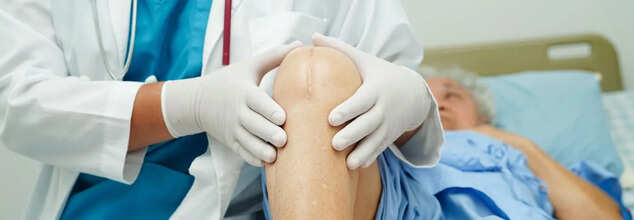
(Credit-Canva)
Antidepressants May Be Raising The Risk Of Sudden Cardiac Arrests Death, Study Finds
While being on medication for mental health was looked down upon, many people have educated themselves and helped others find the help they need. These medications like anxiety meds, antidepressants etc., were revolutionary for many people who have suffered from these mental health issues for years with no help. However, new study shows a concerning link between Antidepressants and sudden risk of cardiac death. A new study presented at the European Society of Cardiology meeting suggests a link between antidepressant use and a higher risk of sudden cardiac death.
This study looked at a lot of information about people who died and whether they were taking antidepressant medicines. According to the European Society of Cardiology 30th March press release, there might be a link between using these mood-lifting drugs and a higher chance of experiencing a very serious heart problem called sudden cardiac death. This is when the heart unexpectedly stops working due to a heart-related issue. The researchers carefully examined death records and medication use to see if there was a pattern.
Does The Affect Vary According To The Duration Of The Medicine?
One of the key findings of the study was that the more time people took antidepressants, the more their risk will be. The researchers explains that people who had been on these medications for a longer time appeared to have a greater risk of sudden cardiac death.
So, does this mean, we should stop taking these meds even for a short period of time? No, but the study does show how the longer people took the medicine, the higher their chance of a cardiac event has become. This finding highlights the importance of considering the long-term effects of antidepressant use and potentially monitoring heart health, especially for those who have been on these drugs for many years.
Other Factors To Consider
The increased risk associated with antidepressant use appears to be more pronounced in younger age groups compared to older adults.
Younger Adults (30-39)
Antidepressant use for one to five years tripled sudden cardiac death risk in this age group. Longer use (six+ years) increased it fivefold compared to non-users, suggesting higher cardiac sensitivity.
Middle-Aged Adults (50-59)
Antidepressants doubled sudden cardiac death risk with one to five years of use. Six or more years quadrupled the risk compared to peers not taking these medications, indicating a substantial heart risk elevation.
Older Adults (70-79)
Antidepressant use for one to five years increased sudden cardiac death risk by 83%. Longer use (six+ years) doubled the risk, suggesting a less dramatic but still significant increase compared to younger groups.
The researchers are still trying to figure out exactly why antidepressants might increase the risk of sudden cardiac death. One idea is that the drugs themselves might have side effects that can affect the heart's rhythm or function. Another possibility is that people who need to take antidepressants might already have more severe underlying health problems, including heart issues, and the longer they are on the medication, the more these underlying conditions might progress.
The press release also issued a statement saying that until this study is published in a well-respected medical journal after going through peer review, the results should be interpreted with caution. Further research and confirmation from other studies are necessary to fully understand the relationship between antidepressant use and the risk of sudden cardiac death.

Credit: Canva
Knee Replacement Surgery-Everything You Need To Know About Recovery Time
A knee replacement surgery, also known as knee arthroplasty, involves replacing damaged knee joint surfaces with metal and plastic parts to relieve pain and improve function, especially for those with severe arthritis or injury. However, there is not much information on what to do after the surgery is performed. Dr Ayesha Abdeen, chief of hip and knee replacement surgery at Boston Medical Center, recently took to social media to break down exactly what to expect—from managing pain in the first few days to getting back on your feet and returning to the activities you love.
Here's Exactly What You Can Expect?
Total knee replacement (TKR) Surgery is usually done using spinal anesthesia along with a nerve block to help reduce pain after surgery. Right after the procedure, you will likely still feel pain relief from the nerve blocks for about eight to 12 hours.
Once the spinal anesthesia wears off, which is usually within the first hour or so in the recovery room, you will be encouraged to start walking. Early movement helps speed up recovery and lowers the risk of serious blood clots that can form in your leg (deep vein thrombosis) and travel to your lungs (pulmonary embolism). You will also be given a medication to help prevent blood clots, such as aspirin or a stronger blood thinner (anticoagulant), depending on the type of clots you have.
Pain during the first few days after TKR can be strong, especially in the front and back of the knee. Pain in the back of the knee may be due to bone spurs caused by arthritis that are removed during the surgery. To help manage this, specific nerve blocks are used right before surgery. After surgery, a “multi-modal” approach to pain relief is used.
This means you’ll get a combination of medications like acetaminophen, anti-inflammatory drugs and low-dose opioids. These medications often begin before surgery and continue afterward. Opioids use is usually stopped after one to two weeks to reduce the risk of dizziness, breathing problems, constipation, nausea and other issues.
How Soon Can You Go Home?
Patients arrive at the hospital the day of surgery and can often go home the same day or the day after. Physical therapy starts the same day as surgery and continues for six to 12 weeks. You can begin walking as soon as the anesthesia wears off. You’ll be allowed to put full weight on your leg, but most surgeons recommend using an assistive device such as crutches or a walker for the first few days or weeks to help with balance and prevent falls.What Exercises Can Help Speed Recovery?
Strengthening your quadriceps and hamstrings. Stretching these muscles improves flexibility at the knee in flexion (bending) and extension (straightening). This is key to avoiding scar tissue and stiffness. Balance and proprioception exercises (which help your body sense where your joints are) to prevent falls. Gait training to help improve the way you walk.
When Can I Return To Normal Activities?
Depending on your activity level before surgery, you can resume walking right away. For those having a desk job, you may return in two to four weeks. For more active jobs that involve standing or walking, it may take four to six weeks. Jobs involving heavy labor may take six to 12 weeks. You should not drive until you have stopped taking opioid medications and are cleared by your surgeon.You can start returning to sports gradually, based on your physical therapy and the type of sport. In general, most people return to sports within six to 12 weeks. Low-impact activities like walking, cycling, swimming and golf are recommended. It’s best to avoid high-impact activities like running or jumping to protect the new joint.
When Should I See A Doctor?
Pain is expected during the first few days and usually gets better after a few weeks. Ice and pain medications can help manage this. If you develop increasing calf and/or thigh pain and swelling, you should contact your doctor, as this could signal a blood clot. If you notice fluid, pus or bleeding at the incision, call your surgical team.
How Long Does A Knee Replacement Last?
A knee replacement usually lasts 15 to 20 years, but sometimes it can fail earlier. Reasons for failure include joint infection (which can happen soon after surgery or years later from infection spreading through the bloodstream), wear and loosening of the components, bone fracture around the implant, instability or severe stiffness
Credit: Canva
Exercise Can Trigger Migraine-How To Manage It Using Personalized Plans
Exercise is often hailed as a natural remedy for many chronic conditions—but for people living with migraine, it can be a double-edged sword. A recent survey published in the Journal of Headache and Pain found that 38% of participants reported physical activity as a trigger for migraine attacks. More than half of those said their symptoms began during exercise, while others noted that attacks started, on average, over two hours after the workout ended.
Migraine is a complex neurological disorder that affects approximately 4.9 million Australians. It is far more than just a bad headache. It is a condition that is indicated by moderate to severe headaches accompanied by symptoms like nausea, visual disturbances, and intense sensitivity to light and sound. Interestingly, while some people with migraine find exercise to be a trigger, others are encouraged to see it as part of their treatment plan. Studies suggest that regular aerobic exercise may help reduce the frequency of attacks, lessen their intensity, and improve overall quality of life.
Accredited exercise physiologist Cordes, who herself lives with chronic migraine, says she couldn’t tolerate even light exercise during the first year after her diagnosis. Speaking to ABC News, she said that it just felt like a bit of a nightmare. Today, she works with a large number of clients navigating the same challenges. Even if you feel like exercise is triggering your migraine attacks, it might not be the whole story. She explained that it could be that you’re working out in the heat, which can be a trigger, or perhaps you’re dehydrated or haven’t eaten enough, which causes blood sugar to drop. All of these factors can contribute.
For some, the impact of migraine has meant stepping away from once-beloved sports. There are many people who confirmed that severe headaches, which is a form of migraine, meant that they had to give up activities like swimming, netball, and basketball.
Personalised Plans Can Help
With so many variables at play, experts stress the importance of personalized treatment plans. For those with migraine, exercise should be approached carefully—starting slow, staying hydrated, avoiding extreme temperatures, and paying attention to the body's signals. What works for one person might not work for another, but with the right support and adjustments, many can find a way back to movement without fear of pain.

(Credit-Canva)
Your Skin Can Reveal THESE Things About Your Health
Skin is the largest organ on our body, it is the external cover above the musculoskeletal system, nervous system and other others, which together work to make a well-functioning body. When you are going through something, like a disease or even a mental health crisis, your skin gives signs of it. Many people explain how someone who is feeling down and struggling with their mental health, their skin reflects it like sunken eyes, discolored skin patches etc.
Your skin acts as a protective covering over our vital organs, it protects them from light, heat and other diseases. So many times, the signs of diseases can be visible first on your skin. Your skin is really important for staying alive. The way your skin looks can tell people a lot about how old you are, if you're healthy, and how you're generally doing. But doctors can learn even more by looking closely at your skin. It can be the first clue that something might be wrong inside your body.
Signs Of Illnesses On Your Body
When you are suffering with a disease, symptoms can show up anywhere, and they are more visible on the skin. You never know that bump or that whitening skin patch on your body part may not be as benign as you may think.
Dark Patches in Folds
Dark, soft, thick skin in armpits and neck might signal "acanthosis nigricans." According to American Academy of Dermatology, this can be a sign of type 2 diabetes, where your body struggles with sugar. Extra insulin in the blood can affect skin cells, causing these patches. While medicines can also cause it, see a doctor if you notice these changes
Pimples on Chin and Jawline
According to the Cleveland Clinic Health Essentials for women, ongoing pimples on the chin and jawline could point to polycystic ovary syndrome (PCOS). This hormone imbalance can also cause more facial hair and thinning scalp hair. If you have these skin issues with irregular periods, talk to your doctor. PCOS can be managed.
Bruising Easily
Bruising or bleeding without a clear injury might indicate a blood disorder. Problems with clotting or platelets can cause this. In rare cases, it could be a sign of certain blood cancers. Other signs include frequent nosebleeds or bleeding gums. See a doctor if you bruise easily for no reason.
Yellow Bumps on Eyelids
Yellowish bumps on eyelids can signal high cholesterol. Cleveland Clinic explains that these bumps are cholesterol deposits under the skin. They might go away with cholesterol treatment. However, they can also be linked to other conditions like thyroid problems or liver issues, so it's important to see a doctor.
Freckles and Sun Spots
Freckles and dark spots show sun damage over time. This damage increases your lifelong risk of skin cancer. Regularly check your skin for any new or changing spots. A dermatologist can examine these and remove any concerning ones.
An Itch That Won't Go Away
Persistent itching without a clear skin cause could signal a problem inside your body, like a blood disorder or even organ failure. If itching lasts more than two weeks, is severe, or comes with other symptoms like fatigue, see your doctor.
Sores on Hands and Feet
According to American Academy of Dermatology, swollen and painful sores on your feet and hands, especially with fever, could be a sign of COVID-19. This is less common but can be the only symptom. If you suspect "COVID toes" or similar skin issues, get tested and isolate yourself.
© 2024 Bennett, Coleman & Company Limited

